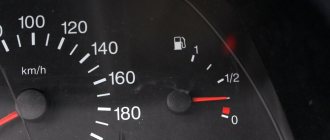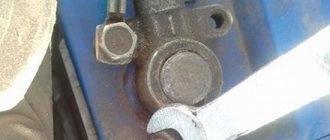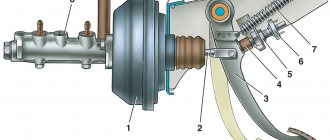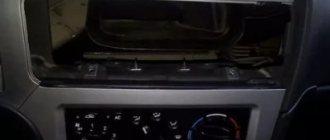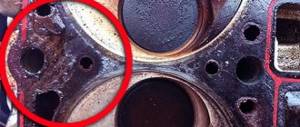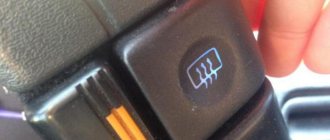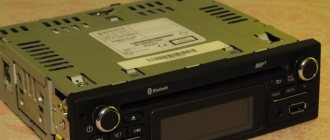Modern compressor equipment is considered very reliable and durable. Thanks to developments in the field of metallurgy, composite materials, and electronics, many mechanisms have undergone changes for the better. The same thing happened with compressors. Although the basic units remain the same, the changes are quite obvious.
Compressors are becoming more compact, without losing their former power. Parts are less likely to fail due to the modern materials from which they were made. Lubricating fluids are becoming richer in additives, which also extend the life of spare parts. You can increasingly see high-tech control panels - with their help it has become possible to easily start and stop cars. In addition, the remote control can provide all the information about the number of hours worked, the compressed medium produced, and even warn about possible future problems. It became possible to diagnose the unit without disassembling it.
Household compressors are also stuffed with all sorts of sensors, although they cannot yet boast of having such an informative remote control. This is what can create some problems. For example, a temperature sensor, sensing minor deviations from the norm in temperature indicators, can simply signal that it is not working properly, which leads to the engine stopping. In this case, it is quite difficult to figure out what exactly the problem is.
During operation of compressor equipment, various breakdowns and malfunctions can occur. Consumers often encounter this problem when the compressor does not gain pressure. Not every owner of compressor equipment knows what to do in such cases.
Typically, such a problem occurs some time after the equipment has been put into operation. At one point, the compressor simply refuses to gain its required pressure. The reason for this could be a variety of circumstances. First of all, you need to check whether the settings of the pressure regulator have gone wrong. Once you are sure that the settings are correct, you can begin a thorough visual inspection of the entire compressor. You should look at the threaded connections of the pipes at the inlet to the receiver and at the outlet of the cylinder - vibration could weaken these critical components and it is possible that this is the reason for the lack of pressure.
Also, do not forget about the screw-in pressure gauge and relief valve - they can also begin to poison from under them for the same reason. The overpressure relief valve itself may fail and stop closing tightly. Such problems can be easily fixed. In this case, you just need to take a suitable wrench and tighten the couplings tightly. In some cases, it may be necessary to replace the gasket or additional winding. If the threaded connections are tightly screwed at first glance and there are no obvious signs of air leaking through them, but the compressor does not gain pressure, you can use a soap solution and, with the unit turned on, coat all connections with a paint brush. If there is still a fistula, it will be immediately visible - bubbles will immediately begin to form at the site of the etching. This method is very convenient, since due to the noise during operation of the compressor, it is not possible to hear the escaping air.
You can also soak the soapy liquid under the cylinder head and under the cylinder itself. So etching from these hard-to-reach places turns out to be a very common cause of under-rated pressure and improper operation of the compressor. Fixing such a breakdown is a little more difficult and it is better to seek help from a specialist. But, if you still decide to repair it yourself, then first you will need to remove the plastic casing, if any. Next, sequentially unscrew the nuts that tighten the cylinder head to the compressor housing. It happens that the nut does not give in and instead a stud begins to unscrew from the body - this is not a problem, but when reseating the cylinder, it is desirable that the studs are screwed in in their places, and everything is tightened with nuts. Once the cylinder head has been carefully lifted, it is possible to inspect the gasket. A possible defect will be immediately noticeable - the gasket will have a rupture in the wall and the reason for this may be poorly tightened previously mentioned studs and nuts. This can only be corrected by replacing the gasket - some models are equipped with spare sets of gaskets, you can also purchase them in specialized stores or make them yourself. To do this, you will need a piece of aluminum sheet with a thickness of 0.2 -0.15 mm. You need to cut out a new gasket using scissors according to the unsuitable sample, and assemble everything as it was originally. Tighten the nuts evenly, crosswise, being careful not to strip the threads. Afterwards, you should start the compressor and again lubricate all possible places where air has leaked to make sure that the defect has been corrected.
The reason that the compressor does not pump up the required pressure can also be worn out compression rings - this is a natural reason for piston compressors. The rings and piston have a set service life, after which they must be replaced with new products. Otherwise, this becomes an inevitable consequence of a loss of power and is primarily manifested by a lack of pressure.
Loose fit and valve breakage is one of the fairly common problems of piston machines, and such a defect is difficult to determine without disassembling it. Signs of this may include excessive overheating of the compressor, a significant increase in the period of time for pressure build-up in the receiver, and sometimes the inability of the unit to reach its rated pressure. In this case, only replacing the broken valve with a new one will help.
In addition, over time, the power of the electric motor also fades, which can also have a bad effect on the final result - pressure. Few people pay attention to the air filter at the inlet and this causes various breakdowns. Dusty air deposits carbon deposits on the piston group, which should not happen in the compressor, since this is not an internal combustion engine. Carbon deposits are also deposited on the rings - this leads to an increase in oil consumption and its release into the receiver, and then into the pneumatic line. The temperature rises, the valves begin to overheat, and then break. A dusty compression environment reduces the service life of the main elements of the compressor piston, rings, and cylinder.
Failure to follow operating instructions, including untimely replacement of filters and other replacement parts, can lead to a lack of pressure and even serious damage. That is why it is necessary to comply with all requirements for operating the compressor, as well as carry out regular maintenance and replacement of necessary parts.
The automobile compressor has replaced the hand and foot pump for inflating tires. The most pleasant advantage of this device is that it is fully automatic and in order to inflate the tire you do not need to use physical effort. It is convenient to have a compressor always at hand, no matter where you are. However, it happens that it fails and then repairs may be required.
Why is a compressor today a driver's essential item? After all, there are so many service stations and tire shops around where you can pump up tires and, if necessary, make other repairs. It's simple. A tire can go flat anywhere, for example, in a mountainous area or in a suburban area, far outside the city - there is not always a specialized workshop nearby. And then, it’s better not to lose control of the situation and fix the problem yourself, quickly, without unnecessary expenses and hassle.
Repair
So, there may be several reasons why the compressor is not working. For an accurate determination, it is necessary to perform a diagnosis. To do this, you will need a special indicator screwdriver, with which you need to check the supplied voltage. If everything is normal here, then you need to look at the fuses, and if they are blown, replace them.
Most often, after such actions, tire inflation devices begin to work as usual. However, it happens that the fuse blows again. This is a sign of a short circuit. To detect it, it is necessary to check the entire electrical circuit and, if necessary, replace faulty elements.
It is also not uncommon for the device to stop working due to the relay settings being reset. This is detected in the following way: you need to bleed the air and then turn on the compressor. If you can hear the motor running, then you need to reset the settings. If you cannot hear the motor, it means it is faulty and needs to be replaced.
Some people have a problem that at the very beginning of work the fuse along with the thermal protection becomes unusable. A possible solution to this problem is to replace the fuse with a more suitable one. If even after this there is no improvement in work and the situation repeats itself, then it will not be possible to fix everything on your own. It is necessary to contact a car service or other specialized service.
For a piston compressor, the problem of poor performance may be due to the piston itself. To eliminate it, just bleed out the air and then clean the valve of various debris.
Auto compressor
Due to the fact that the car compressor comes with various attachments, it can be used not only to inflate car tires, but also for balls, inflatable boats, bicycles, etc. That is, a compressor plus nozzles is a universal device that allows you to solve several problems at once.
In order to repair a compressor, it is important to know its structure and features. So, each representative of automotive compressors is equipped with:
- Electric motor;
- Pressure gauge;
- Cylinder;
- Piston;
- Other components (cables, brushes, gaskets, nipples, nozzles).
According to their design, a distinction is made between membrane and piston compressors. The principle of operation of a membrane compressor is to compress gas due to the fact that the translational movements of the membrane reduce the volume of the chamber. The membrane, sandwiched between the cylinder and the lid, begins to vibrate and acts like a piston.
Piston compressors are equipped with a special piston, which, when connected to the crankshaft, sucks in air masses. They are much more popular among car enthusiasts.
To ensure maximum pressure, piston compressors operate in stepped mode. Thus, the compressed air mass is distilled from one cylinder to another through a cooling tube. The volume of one cylinder is intentionally larger than the second, but the latter pressurizes the air, increasing the efficiency of the device.
Next, we invite you to learn about calibrating the device.
The device calibration procedure itself can generally be divided into several main steps:
- Diagnostics of parameters, which we will discuss below, using a known standard or input data.
- The next step will be to adjust the device until the obtained indicators become equal or proportional in accordance with the existing input data.
As for calibration itself, this procedure includes many checks and adjustments. When the device is fully calibrated, this will mean that it will be able to obtain the most accurate values of the parameters that you measure.
Now let's briefly talk about the equipment that may be needed for calibration. The basic equipment that will be required should include a so-called reference device, a source of operating pressure that can be adjusted as needed. You will also need elements to connect the device to a pressure source and a reference device and several tools that will be useful for adjusting the device. The purpose of measuring devices is to transfer the sizes of physical units from standards to working devices.
As for working measuring instruments (measuring devices), their purpose is to carry out measurements in industry. According to their accuracy class, they can be divided into technical and laboratory. Since not every car enthusiast has such devices, taking measurements can be problematic.
Diaphragm auto compressors break down extremely rarely. Although they are characterized by some breakdowns inherent in piston devices: damage to the power cable or blown fuse in the plug used to connect to the cigarette lighter.
But still, the main element of the tire inflator that can fail is the membrane. Most often, it is made of rubber or other plastic material, which at low temperatures hardens and becomes inelastic. If such an autocompressor is turned on at low ambient temperatures, the membrane will simply rupture. In this case, repairing a car compressor of this type will consist of replacing the membrane.
- Group: Users
- Posts: 24,972
Bastinda (10/17/2012 - 07:58)
Buy a pressure gauge and replace it.
- Group: Users
- Posts: 4,378
- Group: Users
- Posts: 6,719
- White as a hospital, birds are afraid of me.
- Group: Users
- Posts: 6,376
Bastinda (17.10.2012 - 20:40)
terapevt (10/18/2012 - 18:30)
Well, the absolute accuracy of the pressure value is not so important here as its uniformity in all wheels (or in wheels on the same axle, if the manufacturer recommends different pressures). True, the cost of dividing the built-in pressure gauges is not very high, and I also noted that releasing pressure is not very convenient with a compressor.
- Group: Users
- Posts: 3,175
- Group: Users
- Posts: 2,895
- Group: Users
- Messages: 3,090
Post edited by Bastinda: 10.21.2012 - 22:40
Where to get components
There are many stores with components for auto compressors. Some spare parts can be found in auto stores. For convenience, some also order components through online resources.
The most important thing in this case is to buy original spare parts. To be sure of this, you must request a certificate of conformity. The further operation of the compressor will depend on the quality of spare parts.
Source zen.yandex.ru
There are situations when an air compressor, peacefully rattling its engine in the corner of the garage, begins to malfunction, or even shuts down completely. And at this moment, as luck would have it, a need arises for it. Don’t be scared; after studying the theoretical information, repairing a compressor with your own hands will not seem unattainable.
Signs of Compressor Problems
Is your car's air conditioning compressor not working well?
Compressor malfunctions usually show the following symptoms:
- inability to turn on the air conditioner
simply refuses to work; - discrepancy between the set temperature and the real one;
- the presence of extraneous noise under the hood: rumble, whistle;
- a refrigerant leak, which usually manifests itself as oil stains under the car in the area where the engine is located.
If at least one of the listed signs occurs, you should not delay your visit to a car service center. Current faults may affect other parts, leading to even more serious problems. For example, if the bearing on the pulley is not replaced in time, this will lead to breakdown of the electromagnetic clutch (for example, the Skoda Octavia air conditioning compressor clutch, and not only it, is subject to such a danger). If the situation is completely neglected, then there is a risk of failure of the compressor itself, after which all that remains is to replace it.
Purpose, main elements and principle of operation
The main purpose of air compressor units is to create a continuous, uniform stream of compressed air.
The flow of dense gas is subsequently driven by various pneumatic tools. These can be airbrushes, tire inflation guns, impact wrenches, cutting machines, pneumatic chisels, nailers, etc. In the minimum configuration, the compressor unit is equipped with a supercharger (an engine that creates an air flow) and a receiver (a container for storing compressed gas). Compressors with an electric motor of a piston system are most widely used in auto repair shops. In the supercharger crankcase, a transfer rod moves along the axis back and forth, imparting an oscillatory moment to the reciprocating movement of the piston with sealing rings. The bypass valve system located in the cylinder head works in such a way that when the piston moves downwards, air is taken from the inlet pipe, and upwards - it returns to the outlet.
The gas flow is directed to the receiver, where it is compressed. Due to its design, the supercharger produces an uneven stream of air. Which is not applicable for using a spray gun. A kind of capacitor (receiver) saves the situation, which smoothes out pressure pulsations, producing a uniform flow at the output.
A more complex design of a compressor unit involves attaching additional equipment designed to provide automatic operation, dehumidification and humidification. And if in the case of a simple design it is easy to localize a fault, then the complication of the equipment design makes the search difficult. The following are the most common malfunctions and methods for eliminating them for the most common compressed gas supply systems with a piston-type supercharger.
Air compressor device
To understand compressor problems, you need to clearly understand what elements it consists of and what they are intended for. A compressor, in its minimum configuration, consists of a supercharger (an engine that creates air flow) and a receiver - a container that contains compressed air. Piston compressors are most often used.
One of the main requirements for a compressor is its safety. If the pressure in the receiver is not controlled, the compressor will burn out. There is a high probability that the receiver cylinder may explode. To prevent this, the receiver is equipped with an electronic relay that automatically turns off the compressor when the air pressure reaches a certain value.
compressor device
The air compressor is equipped with a pressure gauge that shows the amount of air pressure in the cylinder. To protect the compressor from negative influences, a check valve is used. Its main function is to prevent air from returning back to the compressor when turning off or otherwise interfering with the operation of the unit.
More complex compressor designs are characterized by the presence of additional equipment, such as automation for the compressor. Typically in small compressors, the automation unit maintains pressure up to eight atmospheres using a pressure switch, turning on or off the power to the electric motor when the minimum or maximum pressure in the receiver is reached.
In this case, there are two pressure gauges: the large one shows the pressure in the receiver cylinder, the small one at the outlet. The pressure switch can be equipped with a relief valve. When the unit stops, it will be open, which makes it easier to start the engine later.
Some models have a cooling radiator on the air supply pipes from the compressor to the receiver.
Air cooling contributes to less condensation formation in the receiver. This little detail in the design extends the service life of the automation.
The presence of a drain valve allows you to quickly drain the condensate from the receiver, because it is advisable to end each session of operation of the unit with this operation.
The safety valve releases the increased pressure in the receiver if for some reason the automation does not work, which protects the compressor motor from overload.
The air filter protects the piston system from sand, dirt, and paint fumes.
The following types of compressors are distinguished:
- Volumetric action - holds gas or air in a confined space, increasing pressure. Among them are:
- rotary, the principle of operation is suction and compression of gas when the plates rotate; the working volume decreases, this leads to an increase in pressure.
- piston - pressure is created by the movement of pistons and valves; reliable in operation, but noisier than rotary ones.
- Dynamic - provide compression by increasing the speed of gas movement, increasing its kinetic energy, which is converted into compression energy. There are:
- centrifugal - used for air exchange in mines;
- axial or axial.
Let's consider how a piston-type compressor works; the air or gas in it is compressed by a piston that moves along the cylinder:
- As the piston (3) moves up the compressor cylinder (4), the working gas is compressed. The electric motor moves the piston through the crankshaft (6) and connecting rod (5).
- The suction and exhaust valves are opened and closed by gas pressure.
- The left diagram shows the gas suction phase into the compressor. When the piston moves downward, a vacuum is created in the compressor and the inlet valve (12) opens. Thus, gas enters the compressor space.
- The right diagram shows the gas compression phase. The piston rises and the outlet valve (1) opens. Gas leaves the compressor under high pressure.
scheme of work
The blower itself produces an uneven stream of air, which cannot be used, for example, for using a spray gun. The receiver saves the situation by smoothing out pressure pulsations.
Having replenished the stock of information about the compressor installation, you can repair the compressor yourself. The following compressor unit malfunctions are distinguished:
- The compressor unit's supercharger does not start.
- The thermal protection circuit breaker trips from time to time.
- When the compressor starts, the thermal protection circuit breaker trips and blows the fuse.
- The unit’s engine runs, but does not pump air into the receiver or does so slowly.
- When the supercharger is turned off, the pressure in the receiver drops.
- High moisture content in the outlet air stream.
- Strong engine vibration.
- The compressor unit operates intermittently.
- The air flow is below normal.
Compressor installation defects
To make it easier to find the problem, all defects can be classified according to the nature of the malfunction:
- Compressor unit supercharger does not start
- The compressor motor hums but does not pump air or fills the receiver too slowly
- When starting, the thermal protection circuit breaker is triggered or the mains fuse is blown out.
- When the supercharger is turned off, the pressure in the compressed air container drops
- The thermal protection circuit breaker trips periodically
- The air outlet contains a large amount of moisture
- The engine vibrates a lot
- Compressor runs intermittently
- Air flow consumption is below normal
Let's look at all the causes of problems and how to fix them.
System supercharger does not start
If the engine does not start and does not hum, it means that there is no supply voltage supplied to it. First of all, you should use an indicator screwdriver to check the presence of “zero” and “phase”, as well as the reliability of the connection between the plug and the socket. If there is poor contact, measures are taken to ensure a tighter fit. If there is 220 V at the input of the circuit, the fuses of the compressor unit are looked at.
Failed ones are replaced with passive protection devices of the same rating as the defective ones. Under no circumstances are hot-melt inserts designed for higher electric currents allowed. If the fuse blows again, you should find out the cause of the failure - there is probably a short circuit at the input of the circuit.
The second reason why the unit does not start is that the pressure control relay in the receiver is faulty or the level settings are lost. To check, gas is released from the cylinder and the supercharger is started for a test. If the engine is running, the relay is reconfigured. Otherwise, the faulty part is replaced.
Also, the engine will not start when the thermal overload circuit breaker trips. This device turns off the power supply circuit of the electrical device winding in the event of overheating of the piston system, which can cause the engine to jam. Allow the blower to cool for at least 15 minutes. After this time has passed, restart.
Common problems with reciprocating compressors
Since the design of membrane autocompressors differs significantly from the design of piston ones, some breakdowns of these devices will be characteristic only of a certain type of unit.
The most common malfunctions of piston auto compressors that you can fix yourself include the following:
- the device does not turn on;
- the engine of the unit is running, but does not pump air;
- the device does not create the necessary pressure;
- The compressor switches off spontaneously.
The device does not turn on
Tire inflator compressors have a power cable(s) for connection to a 12 V power source. Some models of devices connect to the car's cigarette lighter, and some to the battery.
If the electric pump does not turn on, then first of all you should check the power cables for damage . They can be “ringed” by a tester. Also, if the compressor is connected to the cigarette lighter, then you need to check the integrity of the fuse installed in the plug. If the fuse blows, it should be replaced.
In extreme cases, the device may not turn on due to failure of the electric motor. Most often, the motor windings burn out due to overheating. It is easier to buy a new car compressor, since repairing a car compressor engine will cost 80% of the cost of a new device.
The unit's engine is running, but it is not pumping air.
If, when you turn on the device, you hear the sound of a running engine, but no air comes out of the hose, then in order to diagnose the unit, you will have to disassemble it:
- unscrew the 4 screws holding the crankcase cover;
- You should also unscrew the 4 screws installed on the piston head;
- remove the cylinder head.
A valve is installed in the cylinder head, which is a common reason why the device does not pump . To eliminate the malfunction, it is necessary to remove the seal and the disk with the valve from the piston head.
There is a small O-ring underneath the valve that can wear out over time. When it wears out, the valve does not fit tightly and allows air to pass through. As a result, compression of the latter does not occur. Also, sometimes this ring can move out of its seat. If this happens, the valve will also not be able to close. Often the valve plate simply breaks. In this case, it must be replaced. This part, like other spare parts, can be purchased in online stores.
Another reason that the device does not pump may be a loose screw that secures the crank to the motor shaft.
The engine hums, but does not work or produces low speeds
When the mains voltage is too low, the electric motor cannot cope with the rotation of the axis, and it will hum. In case of this malfunction, first of all, we check the voltage level in the network using a multimeter (it must be at least 220 V).
If the voltage is normal, then the pressure in the receiver is probably too high and the piston cannot push the air through. In this case, manufacturers recommend setting the automatic “AUTO-OFF” switch to the “OFF” position for 15 seconds, and then moving it to the “AUTO” position. If this does not help, then the pressure control relay in the receiver is faulty or the bypass (control) valve is clogged.
You can try to eliminate the last drawback by removing the cylinder head and cleaning the channels. Replace the faulty relay or send it to a specialized center for repair.
When the supply voltage is turned off, the air pressure in the receiver drops
A drop in compressed air pressure indicates that there is a leak somewhere in the system. Risk areas include: high pressure air line, piston head check valve or receiver outlet valve. We check the entire pipeline with a soap solution for air leaks. We wrap any detected defects with sealing tape.
The drain valve may leak if it is not tightly closed or faulty. If it is closed all the way, and the soap solution on the spout is bubbling, then we change this part. When screwing in a new one, do not forget to wrap the fum tape around the thread.
If the air line and outlet valve are tight, we conclude that the compressor control valve is not operating correctly. To carry out further work, be sure to bleed all compressed air from the receiver! Next, we continue repairing the compressor with our own hands, disassembling the cylinder head.
If there is contamination or mechanical damage to the bypass valve, we clean it and try to correct the defects. If the malfunction is not eliminated, then replace the control valve.
Design and principle of operation of compressors
Compressors for inflating wheels are of membrane type and piston type. Both types of devices are designed for compressing air and differ from each other not only in design, but also in their operating principle.
Membrane devices
If you look at the design of a membrane-type automobile compressor, you can understand that the main element of the unit with which air is compressed is the membrane. It is made either of rubber or metal.
The membrane autocompressor consists of the following elements:
- an electric motor that drives the compressor unit drive;
- compression chamber on which 2 valves are installed;
- rubber, polymer or metal membrane located in the compression chamber;
- a rod connecting the piston to the membrane;
- a piston connected to a rod and connecting rod;
- connecting rod and crank;
- crankcase, which houses the crank mechanism (crank mechanism).
The autocompressor works on the following principle. The crank converts the rotation of the drive shaft into reciprocating movements of the connecting rod. The one connected to the piston sets it in motion. The piston, moving up and down, sets the membrane in motion with the help of a rod. Moving down, the membrane creates a vacuum in the compression chamber, due to which the intake valve opens. When the latter is opened, the chamber is filled with air. Moving upward, the membrane provokes the closure of the intake valve, and the process of air compression begins. When a certain degree of compression is reached, the exhaust valve opens, after which air under pressure enters the hose connected to the tire. When the membrane moves downward, a vacuum is again created in the chamber, from which the outlet valve closes and the inlet valve opens. Next, the entire process described above is repeated.
Important! Due to the fact that the compression chamber is hermetically separated from the crankcase, the air leaving the device does not contain any foreign impurities. In addition, in membrane units, air leakage through seals or piston rings is eliminated, which has a positive effect on the performance of the auto compressor.
Piston units
In piston-type tire inflators, the main part is the piston.
This type of automobile pump consists of the following components and parts:
- an electric motor driving the device drive;
- compression chambers (cylinder) with intake and exhaust valves;
- air filter;
- a piston having an o-ring;
- A crankshaft, consisting of a connecting rod and a crank;
- crankcase in which the crankshaft is located;
- a pressure gauge, which is designed to monitor the tire pressure level and can be installed on a cylinder or hose.
Regular activation of automatic thermal protection
This defect is observed when the power supply voltage is too low, poor air flow or elevated room temperature. We measure the voltage in the network using a multimeter; it must be no less than the lower limit of the range recommended by the manufacturer.
Poor air flow into the discharge system occurs due to a clogged inlet filter. The filter should be replaced or washed according to the unit's maintenance manual. The piston engine is air-cooled and often overheats when placed in a poorly ventilated area. The problem is solved by moving the compressor unit to a room with good ventilation.
The gas outlet stream contains a lot of moisture
This situation occurs under the following conditions:
- Large accumulation of moisture in the receiver
- The air intake filter is dirty
- Humidity in the compressor unit room is increased
Moisture in the output stream of compressed air is combated using the following methods:
- Regularly drain excess fluid from the cylinder
- Clean or replace the filter element
- Move the compressor unit to a room with drier air or install additional filter-moisture separators
In general, piston engines are characterized by high vibration. But, if a previously relatively quiet compressor unit begins to rumble, there is a high probability that the engine mounting screws have become loose or the material of the vibration pads has become severely worn out. This malfunction can be eliminated by pulling all the fasteners in a circle and replacing the polymer vibration isolators.
Compressor runs intermittently
Interruptions in engine operation can be caused by incorrect operation of the pressure control relay or too intense compressed air intake.
Excessive gas consumption occurs due to a mismatch between the compressor performance and power consumption. Therefore, before buying a new pneumatic tool, carefully study its characteristics and air consumption per unit of time.
Consumers should not take more than 70% of the compressor power. If the power of the supercharger exceeds the demands of pneumatic tools by a margin, then the pressure switch is faulty. We either repair it or replace it with a new one.
Air flow is not normal
This malfunction occurs as a result of a gas leak in the high pressure system or a clogged air intake filter. Air leakage can be eliminated by pulling all butt joints and wrapping them with sealing tape.
Sometimes it happens that when draining condensate from the receiver, they forget to completely close the outlet valve, which also leads to a gas leak. This problem can be easily solved by tightly closing the valve. If the dust filter is clogged, clean it, or better yet, replace it with a new one.
Most of the above malfunctions can be avoided by correctly performing the first start-up and running-in of the mechanisms, as well as by performing regular maintenance.
Timely maintenance guarantees the performance of the unit
In order for the device to function properly over a long period of time, the recommended maintenance should begin during the initial stages of operation. Experts recommend the following actions from the moment of purchase:
- When opening the transport package, the presence of the installation passport, technical documentation and compliance with the factory inventory of components is checked.
- Before the first start of the engine, the oil level is checked using the dipstick and, if necessary, topped up to the recommended level. The oil should be filled as recommended by the manufacturer and specified in the technical documentation. To ensure better spreading of the lubricant and check proper operation, let the compressor run for 10 minutes at idle speed.
- If there are no comments, a pneumatic tool is connected to the compressor unit and work begins. Note: It is not advisable to supply power to the supercharger if there is excess pressure in the receiver.
- Try to keep track of the operating time of the compressor and change the oil with new oil after 500 hours of operation. To do this, the crankcase flange cover is removed, the waste is drained and the accumulated contaminants are cleaned. Only after this fresh lubricant is poured in.
- Clean the air inlet filter weekly.
- After 16 hours of operation, the moisture is drained from the receiver using the outlet valve. Manufacturers also recommend cleaning the inner surface of the cylinder every six months using special products.
- At the end of the work, the compressor unit is disconnected from the supply network, and the air is bleed from the high pressure system.
- If the blower has not been used for a long time, the air valve contact pads must be cleaned and lubricated before starting.
- Non-current-carrying metal parts must be grounded. As a rule, manufacturers lead the grounding conductor into the Euro plug. And you only need to ground the corresponding contact in the socket into which the compressor unit is connected.
Timely compliance with these simple requirements will allow you to keep the mechanism in good condition. Such a labor-intensive procedure as repairing a compressor with your own hands will be required extremely rarely. Proper grounding will avoid problems with the electrical part of the device. Regular replacement of oil and cleaning filters will prevent premature wear of rubbing parts.
Source krasymavto.ru
The automobile compressor has replaced the hand and foot pump for inflating tires. The most pleasant advantage of this device is that it is fully automatic and in order to inflate the tire you do not need to use physical effort. It is convenient to have a compressor always at hand, no matter where you are. However, it happens that it fails and then repairs may be required.
Why is a compressor today a driver's essential item? After all, there are so many service stations and tire shops around where you can pump up tires and, if necessary, make other repairs. It's simple. A tire can go flat anywhere, for example, in a mountainous area or in a suburban area, far outside the city - there is not always a specialized workshop nearby. And then, it’s better not to lose control of the situation and fix the problem yourself, quickly, without unnecessary expenses and hassle.
Automotive compressors: repair, diagnostics, prevention
The automobile compressor has replaced the hand and foot pump for inflating tires. The most pleasant advantage of this device is that it is fully automatic and in order to inflate the tire you do not need to use physical effort. It is convenient to have a compressor always at hand, no matter where you are. However, it happens that it fails and then repairs may be required.
Why is a compressor today a driver's essential item? After all, there are so many service stations and tire shops around where you can pump up tires and, if necessary, make other repairs. It's simple. A tire can go flat anywhere, for example, in a mountainous area or in a suburban area, far outside the city - there is not always a specialized workshop nearby. And then, it’s better not to lose control of the situation and fix the problem yourself, quickly, without unnecessary expenses and hassle.
Causes of compressor failure
The most common cause of a car compressor malfunction is a banal fuse blown. The fuse of the unit or the one located on the wire may burn out. This type of damage is not serious and can be repaired very quickly. Moreover, spare parts for repairs can be bought in almost every store, for example here exist.ua.
Also, one of the options in which the compressor fails involves damage to the power cord. It is very easy to identify this problem. It is enough to visually examine the wire and find the place of the tear or break. This problem can also be dealt with easily and quickly. Surely every man has changed the plug on the iron cord.
There are also more serious reasons for the failure of automobile compressors. For example, if the winding of an electric motor or vibration coil catches fire, it is rarely possible to save the patient.
If you find that the compressor turns on, but does not give the desired effect, that is, does not pump air, look for a problem in the wear of the piston or fluoroplastic ring. In this case, it will be cheaper to purchase a new car compressor than to carry out repairs and buy new spare parts.
But most often the problem is not acute and requires minor intervention, replacement of a spare part or component. Usually this is a leaky hose, a valve that fits on the wheel nipple, a rubber gasket ring, brushes, and nozzles.
Car pump breakdowns and the possibility of self-repair
Every owner of a car compressor has encountered a situation where it is necessary to inflate a wheel, but the pump does not turn on at all or suddenly stops working. This often happens due to a burnt-out fuse in the car’s fuse block or because of breaks in the power cable through which the pump is connected to the “cigarette lighter” socket in the car or directly to the battery .
Both of these faults can be easily fixed by the car owner with his own hands. To do this, in the first case, you simply need to replace the blown fuse, and in the second, visually or using a tester, find the location of the cable damage and connect the ends of the broken wires in any available way. If the newly installed fuse blows again, it most likely has a short somewhere and requires a more complex repair. The compressor can only be turned on after the fault has been found and corrected.
Another breakdown typical of any compressor is bleeding of air due to the hose connecting the pump to the car tire being worn out. In this case, the hose must be replaced.
Important! In cases where the cause of the malfunction is a fire in the electric motor winding, repairing the automobile compressor is impractical. This is due to the fact that the price of a new electric motor is about 80% of the cost of the finished product.
But there are also a number of malfunctions that are characteristic of this or that type of automobile compressor.
Diaphragm group pumps
Vibrating pumps rarely fail. In this case, the most vulnerable element of such a unit is the membrane (diaphragm), made mainly of rubber or elastic polymers. Long-term operation of the diaphragm pump is ensured by eliminating the possibility of moisture, as well as dust and dirt particles entering the compression chamber . Timely replacement of worn parts and assemblies is also essential. During operation, vibration pumps are most often subject to wear:
- diaphragms that can become stiff under low temperature conditions;
- gas valves;
- pressure limiters.
Piston pumps
The owner of a piston pump may also encounter a number of typical malfunctions specific to this category of compressors. Among them, the most common cases are when:
- the pump motor is running, but the compressor is not pumping air;
- there is no required pressure at the compressor outlet;
- the pump switches off spontaneously.
It is not difficult to eliminate these faults, but you will have to disassemble the compressor. This is done in the following order: first, unscrew the screws (4 pcs.) holding the crankcase cover and remove it, then remove the cylinder head, removing the fasteners located on the piston head. Next, you need to diagnose and, if detected, eliminate faults in the order given in the table.
| Malfunction | Cause | Elimination |
| A faulty valve in the cylinder head prevents the compressor from pumping air normally. | Factors causing malfunction: |
Ø wear or displacement of the sealing ring located under the valve;
Ø valve plate breakage;
Ø presence of dirt accumulated under the valve.
Features of auto compressors
Due to the fact that the car compressor comes with various attachments, it can be used not only to inflate car tires, but also for balls, inflatable boats, bicycles, etc. That is, a compressor plus nozzles is a universal device that allows you to solve several problems at once.
In order to repair a compressor, it is important to know its structure and features. So, each representative of automotive compressors is equipped with:
- Electric motor;
- Pressure gauge;
- Cylinder;
- Piston;
- Other components (cables, brushes, gaskets, nipples, nozzles).
Based on their design, a distinction is made between membrane and piston compressors . The principle of operation of a membrane compressor is to compress gas due to the fact that the translational movements of the membrane reduce the volume of the chamber. The membrane, sandwiched between the cylinder and the lid, begins to vibrate and acts like a piston.
Piston compressors are equipped with a special piston, which, when connected to the crankshaft, sucks in air masses. They are much more popular among car enthusiasts.
To ensure maximum pressure, piston compressors operate in stepped mode. Thus, the compressed air mass is distilled from one cylinder to another through a cooling tube. The volume of one cylinder is intentionally larger than the second, but the latter pressurizes the air, increasing the efficiency of the device.
DIY car compressor repair
A modern motorist, along with the usual jack and wheel wrench, should always have a compressor on hand for inflating tires. I drove a car for a very long time without this device, since the old one was so out of order that it was painful to look at it and it was decided to throw it away. But the lack of your own compressor creates a lot of inconvenience, and now there is pumping at gas stations and you can ask your neighbor, but as luck would have it, the tire will blow off while fishing and in the morning, when you already need to go to work.
For a very long time choosing according to many parameters here https://market.yandex.ru/catalog—avtomobilnye-kompressory/54815/list?local-offers-first=0&deliveryincluded=0&onstock=1 :
- Performance
- Connection type (socket, terminals)
- Manufacturer
Etc. As a result, I decided not to think too much about it and bought the simplest one in Auchan for 1615 rubles https://www.auchan.ru/pokupki/avtotovary/oborudovanie-i-prinadlejnosti/avtomobilnie-kompressori.html
And of course, it turned out to not be working, which became the subject of an article that has not been written on our website for a long time.
And now the subject of the article itself, in which I don’t want to talk about repairing a car compressor, because our main audience is washing machine and refrigerator repairmen, and this is much more difficult than a cheap compressor from Auchan
The essence of the article is to tell me what algorithm I use to look for faults
Current source
The first thing you need to do is check the power source, and in my case it’s the car’s on-board 12-volt DC power supply. This is done with a multimeter or a properly functioning electrical device (in my case, it’s a phone charger), it’s better that the devices are comparable in power consumption
Protection system
Any electrical appliance has a protection system against overvoltage and short circuit, usually it is a fuse, but instead there may be a resistor, so after that it is worth checking this unit
A blown fuse is a consequence, but the reason is different
Wiring
There are also wires in every consumer of electricity and they often wear out, fray, burn out, etc., to check the wires you need basic knowledge of how to use a multimeter and a little free time
Next, differences begin depending on the type of electrical appliance and the more complex it is, the deeper this branch will be, coming from the starting point, and in my case the button was faulty, which I replaced and the compressor started working.
Good luck to everyone with the repairs!
Weaknesses of a piston compressor
The most common problems with a piston compressor are:
- The compressor refuses to start;
- There is no release of air into the receiver, although the motor is running;
- Knocks out fuses;
- Air pressure drops sharply;
- Incorrect operation of the thermal protection circuit breaker;
- The humidity of the air pumped by the compressor is increased;
- The motor operates at high vibrations;
- The connection between the hose and the nozzle is worn out and the air is leaking.
Weaknesses of a membrane compressor
The weakest part of membrane compressors is the membrane. If foreign particles accumulate in the gas cavity of the unit. Important aspects of working with such a compressor are:
- Keeping the block clean.
- Prevents moisture and dirt from entering the membrane block.
- Timely replacement of spare parts (membrane, gas valve, pressure limiter).
The most common problems with a piston compressor are:
- The compressor refuses to start;
- There is no release of air into the receiver, although the motor is running;
- Knocks out fuses;
- Air pressure drops sharply;
- Incorrect operation of the thermal protection circuit breaker;
- The humidity of the air pumped by the compressor is increased;
- The motor operates at high vibrations;
- The connection between the hose and the nozzle is worn out and the air is leaking.
Since the design of membrane autocompressors differs significantly from the design of piston ones, some breakdowns of these devices will be characteristic only of a certain type of unit.
The most common malfunctions of piston auto compressors that you can fix yourself include the following:
- the device does not turn on;
- the engine of the unit is running, but does not pump air;
- the device does not create the necessary pressure;
- The compressor switches off spontaneously.
Tire inflator compressors have a power cable(s) for connection to a 12 V power source. Some models of devices connect to the car's cigarette lighter, and some to the battery.
If the electric pump does not turn on, then first of all you should check the power cables for damage. They can be “ringed” by a tester. Also, if the compressor is connected to the cigarette lighter, then you need to check the integrity of the fuse installed in the plug. If the fuse blows, it should be replaced.
In extreme cases, the device may not turn on due to failure of the electric motor. Most often, the motor windings burn out due to overheating. It is easier to buy a new car compressor, since repairing a car compressor engine will cost 80% of the cost of a new device.
If, when you turn on the device, you hear the sound of a running engine, but no air comes out of the hose, then in order to diagnose the unit, you will have to disassemble it:
- unscrew the 4 screws holding the crankcase cover;
- You should also unscrew the 4 screws installed on the piston head;
- remove the cylinder head.
There is a valve installed in the cylinder head, which is a common reason why the device does not pump. To eliminate the malfunction, it is necessary to remove the seal and the disk with the valve from the piston head.
There is a small O-ring underneath the valve that can wear out over time. When it wears out, the valve does not fit tightly and allows air to pass through. As a result, compression of the latter does not occur. Also, sometimes this ring can move out of its seat. If this happens, the valve will also not be able to close.
Another reason that the device does not pump may be a loose screw that secures the crank to the motor shaft.
If the screw is unscrewed, the motor shaft will rotate, but the crankshaft will remain motionless.
If, when trying to inflate the tires, it is not possible to achieve the required pressure, then the cause of the problem may be, as in the previous case, the valves. Various contaminants can accumulate under them, preventing a good fit. To repair a compressor for inflating tires, you will need to disassemble the piston head and thoroughly clean all parts from accumulated dirt.
Sometimes insufficient air pressure at the inlet from the unit may be due to deformation of the o-ring placed on the piston.
To remove the piston, you need to remove the sleeve jacket and the sleeve itself.
The piston sealing ring may become deformed due to overheating of the unit. To straighten the ring, it must first be softened. For this purpose, you can use either solvent 646 or WD-40 fluid. After the ring becomes soft and pliable, it should be leveled, the sleeve and jacket should be put in place. You can check whether the piston moves correctly in the sleeve by turning the engine shaft.
Some models of auto compressors have overheating protection. For this reason, the device can turn off spontaneously, for example, during prolonged operation. But overheating of the unit can also be caused by manufacturing defects, especially in inexpensive models. The defect lies in the poor fit of the device sleeve to the shirt. In this case, heat removal from the piston block is reduced and, as a result, the piston head and engine overheat.
In this case, repairing a car pump will consist of eliminating the gap between the sleeve and the jacket (you can use thin sheet aluminum or thermal paste). Thin sheet aluminum can be “mined” by cutting an ordinary beer can. You need to wrap the sleeve with aluminum and insert it tightly into the shirt. After these steps, heat transfer will improve and the compressor will no longer turn off spontaneously.
What to do if the compressor does not start
If the device refuses to work, you need to perform certain diagnostic actions using an indicator screwdriver. We examine whether there is a phase and whether voltage is supplied. If everything is in order with the phase, proceed to checking the fuses, perhaps they have melted. If this is the case, then simply replace the fuse. It is important to remember that when making repairs, the installed spare parts must be of equal value.
After replacement, everything should work, however, it happens that the fuse blows again. This suggests a possible short circuit. Repair needed. Call the diagram. When the faulty parts are installed, replace them with new, similar parts.
Compressor failure may be due to a failure in the settings of the pressure control relay. To diagnose this problem, do the following: bleed the air and restart the compressor. If you hear the sound of the motor running, reset the settings, the motor is not functioning, you need to replace it. Remember that when the thermal protection is working intensively, it is necessary to cool the engine for at least 20 minutes, this will normalize the operation of the compressor.
Particular attention is paid to the situation when, when the device is turned on, both the fuse and the thermal protection fail. If the only problem is that the installed fuse is not designed for the operating power of the unit, then the repair comes down to a simple replacement of the spare part. But if the relay fails, do not try to get into it yourself. In order to receive qualified repairs, go to the service center.
In a situation where the piston is faulty, you need to disassemble the device. When making repairs, release the air, clean the valve from dirty formations; if the pressure continues to drop, the problem is in the valve and it needs to be replaced.
Do It Yourself (Knowledge) 1999-02, page 116
How to repair a tire pump
The three parts of a tire inflator that most often fail are the hose fitting, the cuff and the cap.
The proposed methods for restoring their functionality are simple. That's the essence of them. With prolonged use of the pump hose fitting, the splines 3 (Fig. 116-1, a) of nipple 1 wear out. As a result, it does not open the spool valve well, which makes it difficult for air to pass into the chamber.
A new nipple can be made from an M4*0.8 screw, guided by Fig. 116-1.6. A hole with a diameter of 2 mm is drilled with a hand drill. Gasket 2 is best made of two layers of leather up to 1 mm thick. To remove a failed nipple and install a new nipple, use a screwdriver with a slot on the end.
If the cuff has become unusable, a pump is used to form a new one (Fig. 116-2, a). The edges of cylinder 6 and small washer 2 should be processed as shown in Fig. 116-2, b.
From leather 2-3 mm thick, a blank with a diameter of 70-75 mm with an 8 mm hole in the center is cut out. Place it in a jar of water for 1-2 hours. After softening, mount the workpiece on rod 3, installing a large
Rice. 116-1. Repair of hose fitting: a - tip: b - nipple
Rice. 116-2. Molding (a) and processing (b) of the cuff
Rice. 116-3. Cover repair
washer 1 according to the figure. By pressing and shaking the rod, a cuff is formed. Radial folds may appear inside it. They need to be smoothed out carefully. When a depth of 10 mm is reached, excess skin 4 is cut off with knife 5. Having smoothed out the folds a second time, the cuff is left pressed in for 2 hours. After this, it is placed in a bath with fish oil. The cuff taken out from there after a few days is ready for use.
Wear on the walls of the pump cover hole is compensated as follows. Sheet brass is rolled into a sleeve A (Fig. 116-3). It is installed in the hole and flared,
The matter can be fixed
It's a shame that the tire inflator often fails due to a trifle. The “antennae” that opens the spool valve breaks. Then you have to unscrew and screw back the spool itself each time or buy a new pump. But you can find a better way.
Rice. 117. a - tip: 1 - head; 2 — pressure plate; 3 - fitting, b - new pressure plate
Enlarge the hole in fitting 3 (Fig. 117) with a 3.2 mm drill and cut an M4 thread. Make pressure plate 2 from an M4 screw, which must first have two chamfers cut off on its sides to allow air to pass through. The plank will be better centered if the chamfers are not made along the entire length. Then you need to cut out two recesses in the round head.
To secure the strip more firmly, before wrapping it, lubricate it with BF-2 glue.
114
Where to get spare parts for compressor repair
With such an abundance of auto stores and places where components are sold, your head can simply spin. Where can I buy spare parts for repairs or new attachments? In principle, there is no big difference in the places where spare parts are sold. It's a matter of convenience for everyone. Some people go to a specialized store, some for meal, while others find it convenient and profitable to order spare parts via the Internet. The taste and color, as they say.
The main thing is not to run into a fake when making a purchase. Original spare parts are the key to their long service life. Ask for a certificate or warranty card when purchasing new parts for repairing compressors from the seller.
In general, compressor repair is simple and can be done without the appropriate experience or qualifications. Although it is better to prevent breakdowns in advance by simply caring for the equipment.
Source autodont.ru

